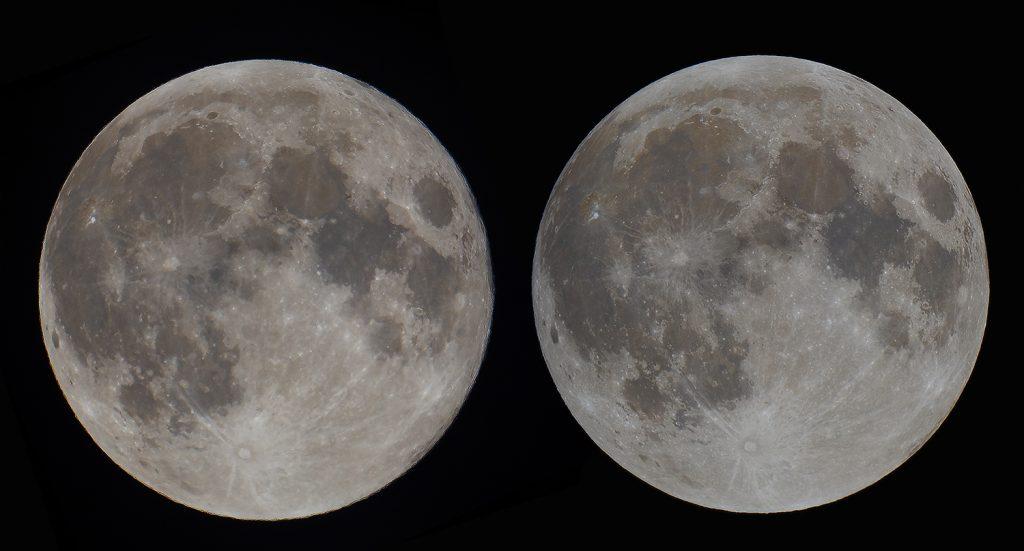After the media frenzy about the Super Blood Blue Moon on Wednesday, I thought I’d look through my collection to see if I have any full Moon images to directly compare lunar disk sizes. I found an image I took of the Full Moon just before the lunar eclipse started on the 28th of September 2015 with the same telescope and camera to see if I could compare them.
There isn’t actually that much in it, but can you make out which one is the so-called Super-Moon? No neither can I.
Out of interest, the 2015 eclipse was also when the Moon was fairly close to perigee, so the difference isn’t that much anyway.
But the media never went on then quite as much as they did this week about it being a super blood moon, did they?
Of course a much better comparison full moon image would be one taken close to apogee, when the Moon will be at its furthest.
One to try and capture later in the year perhaps.
However, when I posted the comparison image, a social media friend pointed out that there was a bit of a difference in libration, (The slight “wobbling” of the Moon) and that it could possibly make a great 3D image if they were scaled and positioned correctly.
So, given that the clouds are still about, I’ve got time to have a play.
First I had resize one image to exactly the same size as the other.
Next I had to work out which way each image needed to be rotated to give the best impression.
Hopefully once aligned that way side by side, when you go cross-eyed in the correct direction, the images are exactly registered.
The difference in the images seen by each eye should then trick the brain into perceiving a 3D image floating in the middle.
So here’s the result. Go Cross-eyed. Does it work for you?

